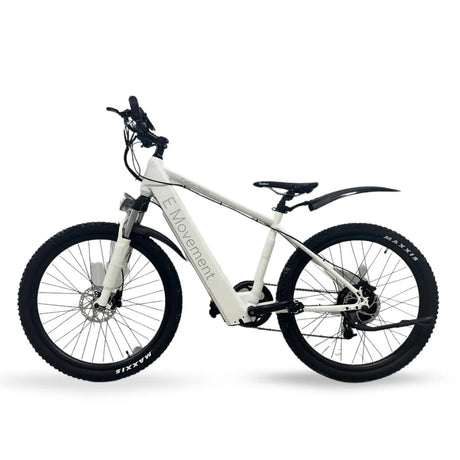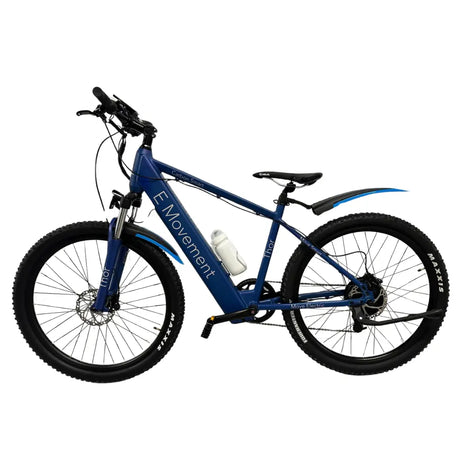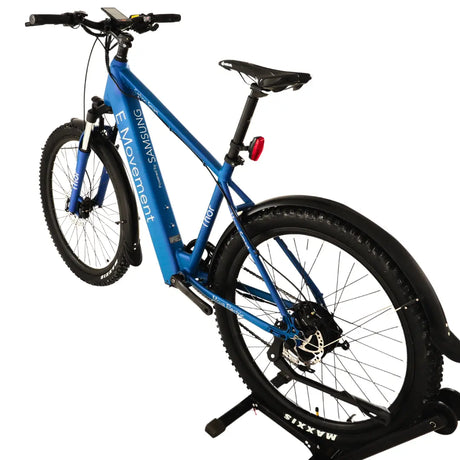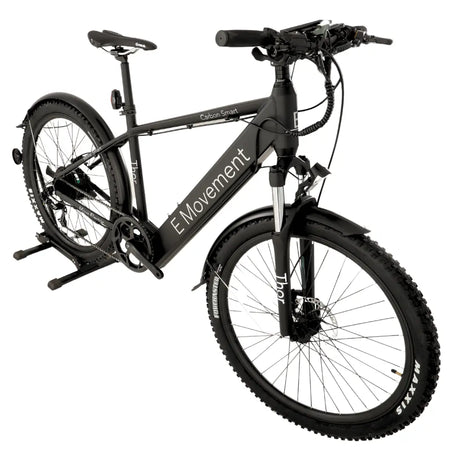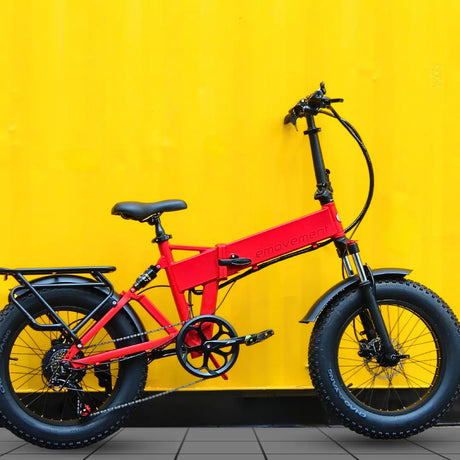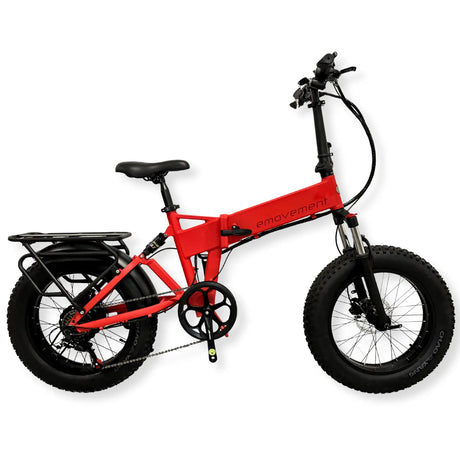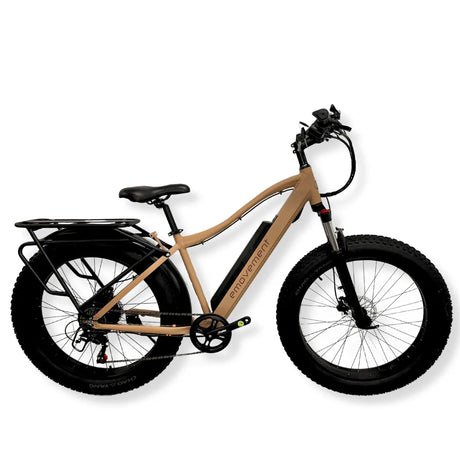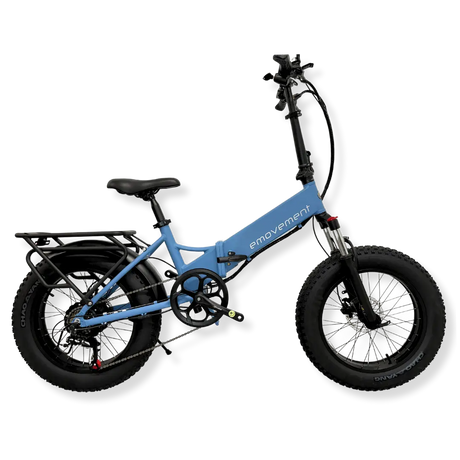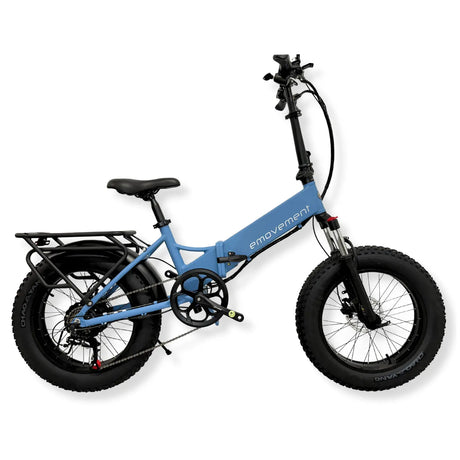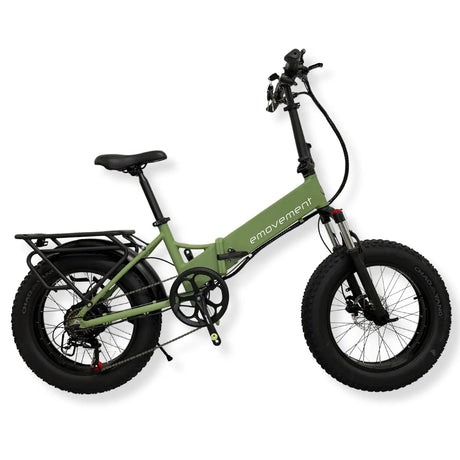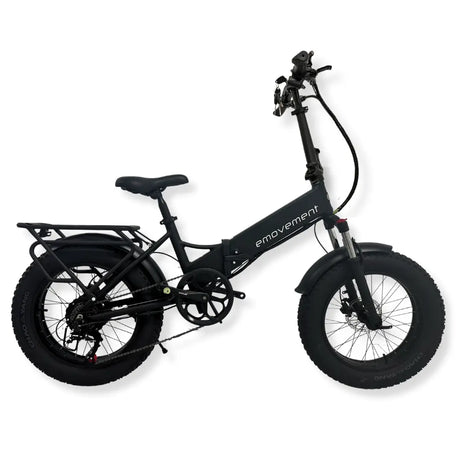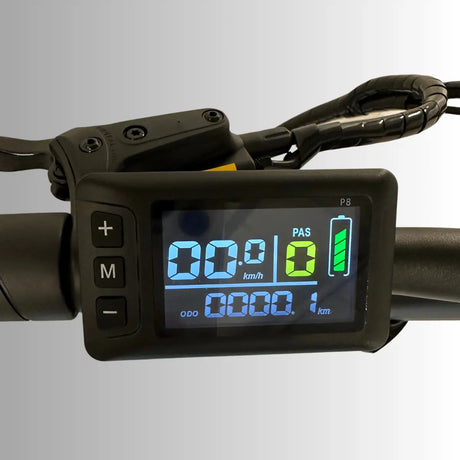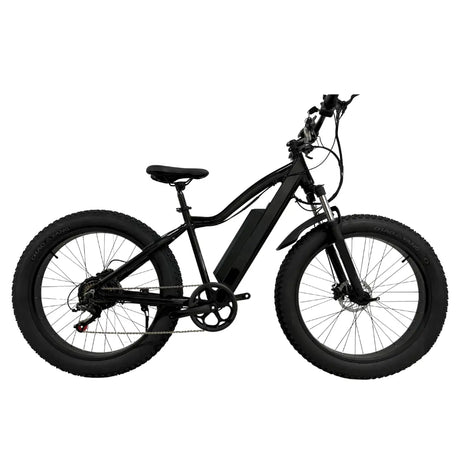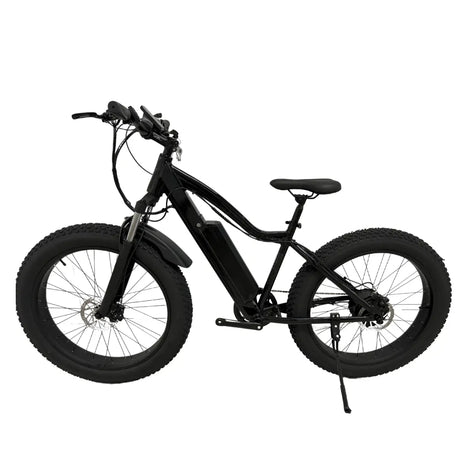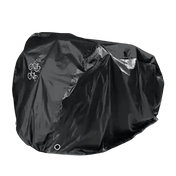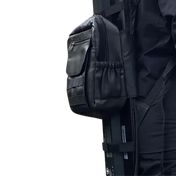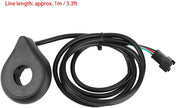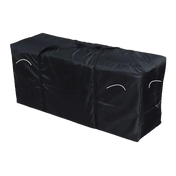Are you ready for the ultimate adventure with your electric bike? We present the exciting world of bikepacking, where every journey is a fusion of cycling and camping. E-bikepacking combines the thrill of e-biking with the freedom to explore remote landscapes while carrying everything you need on your bike. Whether you’re a seasoned adventurer or new to the electric bike scene, it offers the freedom to ride on terrains that are often out of reach by other means.
E-bikes equipped with pedal-assist technology are rewriting the rules of bikepacking. They offer an extra push when you need it, allowing you to conquer challenging ascents and extend your explorations. Embrace the electric revolution and unlock a world of possibilities in adventure cycling.
The Benefits of Using an Electric Bike for Bikepacking
When it comes to bikepacking, e-bikes are changing the game. These pedal-assisted wonders offer various benefits that make them an ideal choice for your next adventure.
Extended Range and Distance
One of the main advantages of using a bikepacking ebike is the extended range and distance it provides. Unlike regular cycles, e-bikes are equipped with batteries and motors that provide pedal assistance, making it easier to cover more ground in a single journey.
For example, with a mountain e-bicycle, you can venture deeper into the wilderness or explore those distant trails you’ve always dreamed of. And the best part? You don’t have to stop ever so often as they won’t let you get tired. It’s like having a tailwind at your back, allowing you to enjoy longer rides and truly immerse yourself in the beauty of your surroundings.
Conquering Challenging Terrains with Ease
Electric bikes are not just about going farther; they also excel at conquering challenging terrains with ease. If you encounter steep hills, rugged trails, or rocky paths, the electric motor provides that extra push you need to keep going. This means you can confidently tackle regions that might have seemed intimidating on a traditional bicycle.
When navigating mountain passes or dense forests, your e-bike will enable you to overcome obstacles and reach your destinations swiftly.
Energy Conservation for Long Trips
Long bikepacking trips can be physically demanding, especially if you’re carrying all your gear with you. Luckily, that’s where electric bicycles come to the rescue by ensuring energy conservation. Riders can distribute their energy more efficiently using pedal assist and prevent exhaustion on the first leg of the journey.
And this way you’ll have more energy to enjoy the entire trip. E-bikes help strike a balance between effort and enjoyment, making multi-day or week-long adventures not only possible but enjoyable.
Expanding Horizons for All Fitness Levels
Athletes aren’t the only ones who can go bikepacking with an e-bicycle. In fact, these bikes are incredibly inclusive and cater to riders of varying fitness levels. Step-through e-bikes and women’s electric bikes take this a step further by catering to multiple body types too! Whether you’re a seasoned cyclist or a relative newcomer, the pedal-assist feature and easy mounting guarantees that everyone can join in on the adventure.
Electric bikes level the playing field by making bikepacking accessible to a broader range of enthusiasts. So, don’t let concerns about physical fitness hold you back – with an e-bicycle, the world of bikepacking is open to all.
Choosing the Right Electric Bike for Bikepacking
Selecting the perfect bikepacking e bike for your adventure is a crucial step. Let’s break down some key factors and bikepacking rules to look at when making this important decision.
Understanding E-Bike Classifications
Understanding e-bike classifications is the first step in your selection process. These classifications often include Class 1, Class 2, and Class 3 bicycles, each entailing its own set of regulations and capabilities. We recommend researching and choosing the class that aligns with your desired level of assistance, local regulations, and specific bikepacking needs.
- Throttle or Pedal-Assist: Determine whether you prefer a throttle-controlled electric bike or one with a pedal-assist, which activates once you start pedalling.
- Legal Compliance: Ensure your e-bike choice complies with local laws and regulations. This is essential if you plan to bikepack across different regions, as legal conformity leads to a seamless and worry-free journey.
Battery Life and Range: Critical Considerations
When it comes to electric bicycle batteries, you’ll have to consider two vital aspects:
- Battery Capacity: Battery capacity controls how far you can travel on a single charge and higher-capacity batteries are ideal for longer bikepacking journeys. Assess the capacity of your bike’s battery to make sure it matches your adventure’s requirements.
- Charging Accessibility : Plan out how easily you can recharge your bike’s battery during your trip, particularly if you plan to venture off the grid for an extended period. A reliable battery ensures you can confidently explore remote areas without the fear of losing power. We recommend taking solar chargers with you.
Suspension and Terrain Compatibility
Selecting the right e-bike suspension is essential when encountering diverse terrains to enjoy the great outdoors without discomfort or fatigue. Here are some factors you should assess carefully:
- Terrain: Evaluate the type of terrain you’ll be riding on, whether it’s rocky trails, gravel roads, or mixed surfaces, and pick an electric bicycle with suspension that matches your chosen route.
- Comfort: Opt for an e-bike that provides a comfortable ride, as reduced fatigue on long journeys will allow you to fully appreciate the outdoors and enhance your bikepacking experience.
Frame Design and Luggage Carrying Capacity
Consider the frame design of your bike and its luggage-carrying capacity for enhanced comfort during long rides:
- Mounting Points Matter : It’s in your best interest to prioritize electric bikes with mounting points for racks and panniers. These features enable secure gear storage- an ebikepacking essential.
- Sturdy Support: Your e-bike’s frame should be sturdy enough to handle the added weight of your gear. It’s your trusty companion for carrying belongings during your bikepacking adventure.
- Proper Sizing: Select an e-bicycle with a frame size that matches your body because a well-fitted one ensures better handling and control.
Tyres and Motor
When choosing an electric bike for bikepacking, don’t overlook the importance of the right tyres and motor. These factors can significantly impact your ride quality and overall experience:
- Tyre Selection : Tyre selection depends on the terrain type you’ll be traversing, so opt for the ones that are appropriate for it. Fat, knobby tyres offer stability and grip for off-road adventures, while narrower, slicker ones are better for smooth roads. Finding the right balance is crucial for a comfortable and efficient ride.
- Motor Power: An e-bike motor is the heart of the vehicle. Unsurprisingly, higher-wattage motors provide more assistance, which can let you easily conquer challenging terrains and carry heavy loads. However, for bikepacking, a balance between motor power and battery life is recommended if you wish for a successful journey.
- Motor Placement: Some bikes have motors located in the hub of the wheel. In contrast, others have it positioned in the bottom bracket. The latter placement often provides a more natural and responsive riding experience. You’ll have to determine which motor placement suits your riding style and preferences.
- Torque Sensor: A torque sensor measures the force you apply to the pedals and adjusts the motor’s assistance accordingly. Electric bicycles equipped with torque sensors , although expensive, offer a smoother and more intuitive ride, making them ideal for bikepacking adventures where varying terrains and effort levels are common.
Preparing Your Electric Bike for the Journey
Getting your electric bike ready for e-bikepacking beforehand is paramount. In this section, we’ll delve into some preparations every rider should make before they set off on their journey.
Essential e-Bike Maintenance Checks
Before hitting the trail, carry out a thorough ebike maintenance check to ensure everything is in top shape. This includes examining critical components and paying attention to electric bicycle locks and GPS trackers for maximum safety during stops.
- Tyre Pressure: Check and adjust tyre pressure for optimal performance, especially if you’ve customized your tyres for specific terrains. Proper tyre pressure improves ride comfort and efficiency.
- Brake Functionality: Reliable brakes are vital for your safety during descents and sudden stops. For this reason, test your brakes to determine whether they’re responsive and in good working order.
- Chain and Drivetrain: Lubricate and clean the chain and drivetrain whenever possible. As a well-maintained chain reduces wear and improves, adopting this practice will guarantee smooth pedalling throughout your riding adventures.
- Electrical Components: You should inspect electrical connections and wiring, such as those related to your electric bike locks and GPS trackers . Make sure everything is secure and functional to prevent any interruptions during your rides.
Battery Management and Care
Proper battery management is key to a successful bikepacking trip. Maximize your battery’s lifespan and performance by following these tips:
- Charge Smartly: Charge your e-bike’s battery to an appropriate level. Overcharging or depleting it entirely can affect its longevity, so keep it between 20% and 80% charge when possible.
- Carry Spare Chargers: It’s always a good idea to carry a spare charger in your gear for longer journeys where recharging opportunities might be limited.
Customizing for Comfort: Saddles, Grips, and Pedals
Enhancing your comfort during bikepacking is essential. Customize your electric bike with saddle, grip, and pedal options that suit your preferences and riding requirements.
- Ergonomic Grips: You can reduce hand fatigue by opting for ergonomic grips that provide better control over rough terrains and elevate your overall cycling experience.
- Comfortable Saddle : There’s no doubt that a well-padded saddle can make long hours on the e-bike much more enjoyable. You won’t regret investing in a comfortable saddle that matches your riding style.
- Special Suspension Seat Posts: A suspension seat post acts as a shock absorber. If you have a rigid bike without shock absorbers or a hardtail bike with front suspension only, it’s best to equip it with a suspension seatpost for smoother rides.
- Pedal Efficiency : Choose pedals that match your preferred style – flat, clipless, or hybrid. The right pedals ensure efficient pedalling and comfort over long distances.
Lighting and Visibility Enhancements
One vital practice every cyclist should adopt when bikepacking is riding safely at night or in low-light conditions. Consider these lighting and visibility upgrades:
- Bright Headlights: Install powerful headlights on your e-bike to illuminate the path ahead, as they not only enhance safety but also allow you to ride confidently in the dark.
- Rear Lights: Equipping your bicycle with rear lights improves visibility to other road users and reduces the risk of accidents.
- Reflective Accessories: Add reflective elements to your gear and electric, like reflective strips, vests, and accessories to appear more noticeable to others.
- GPS Tracker and Locks: It’s in your best interest to use GPS trackers and secure locks for electric bikes to protect your vehicle from theft during rest stops, like smart locks or D-locks.
Gear and Equipment for Electric Bikepacking
Electric bikepacking riders should equip themselves with the right gear and equipment for a successful adventure. We’ll now look at some essential items you’ll need to stock up on:
Packing Essentials and Their Weight Implications
As you prepare for your bikepacking journey, carefully consider what you must take with you. A good place to start includes the following supplies:
- Pannier Bags: Buy high-quality pannier bags that offer sufficient storage capacity without adding excessive weight. Distributing your gear evenly across your e-bike helps maintain balance and stability.
- Water: Although hydration is key , so is efficiency. This means it’s smart to carry an adequate supply of water, but also plan water resupply points along your route to avoid carrying excessive weight.
- Tent and Sleeping Bags : Opt for lightweight and compact camping gear to minimize the weight you’ll be carrying. Luckily, modern materials offer durability without sacrificing portability.
- Food: You can plan your meals wisely by going for dehydrated or lightweight food options. These options provide the necessary nutrition to stay energized during your rides while preventing you from overloading on gear.
- Clothing: Pack versatile and moisture-wicking clothing to adapt to varying weather conditions. Additionally, layering will allow you to stay comfortable and avoid carrying excessive garments.
Solar Chargers and Backup Batteries
Maintaining your e-bike’s battery life is crucial during bikepacking. Let’s look at some options that will keep your bike charged and ready for the upcoming journey:
- Solar Chargers: Solar chargers provide a sustainable way to recharge your e-bike’s battery during stops, particularly when you’re travelling through remote areas with limited access to power sources.
- Backup Batteries: Carry backup batteries for your electric bike to ensure you have enough power to complete your planned route. Lightweight and portable battery options are available if you wish to have an extended adventure.
Navigation Tools: GPS, Maps, and Apps
Effective navigation tools are crucial for staying on course during bikepacking adventures:
- GPS Devices: Invest in a reliable GPS device designed for bikepacking, as it can help provide accurate location tracking and route guidance.
- Maps: Physical maps can serve as valuable backup navigation tools when technology fails. For outdoor adventures, you should purchase waterproof and tear-resistant maps, so they don’t tear or get damaged in harsh weather conditions.
- Navigation Apps : Utilize navigation apps on your smartphone that offer offline maps and route planning. These apps can be lifesavers when exploring unfamiliar territories.
Safety and Repair Kits for the Road
It’s always best to be prepared for unexpected challenges on the road with safety and repair kits:
- First Aid Kit: Keep a compact first aid kit to address minor injuries and health concerns during your bikepacking journey.
- Tool Kit: Equip yourself with essential bike repair tools to handle common mechanical issues on the road, such as tyre levers, a multi-tool, spare tubes, and a tyre repair kit.
- Safety Gear: Wear a helmet and high-visibility clothing to enhance safety. Additionally, consider a bike lock for securing your e-bike during stops.
Challenges Unique to Electric Bikepacking
Electric bikepacking brings its own set of challenges that require careful consideration. In this section, we’ll explain these unique obstacles and how to navigate them effectively.
Battery Depletion and Power Management
For most riders, managing their electric bicycle’s battery during a bikepacking adventure is a primary concern. The potential for battery depletion, especially on longer journeys, requires strategic planning.
- Range Anxiety: Be mindful of your e-bike’s range and the availability of charging points along your route. It’ll help to plan your daily distances accordingly, so you can avoid running out of power in remote areas.
- Energy-Saving Riding: Use pedal-assist modes wisely. Select lower power levels when riding on flat terrain and reserve higher assistance for climbs and challenging sections. This extends your battery life and maximizes your riding experience. You can keep pedal assist off on flat trails as well.
- Spare Battery: If feasible, consider carrying a spare ebike battery for longer trips because having an extra power source will provide peace of mind.
Navigating e-Bike Restrictions in Wilderness Areas
Certain wilderness areas and national parks may have restrictions or bans on electric bike usage. It’s essential to research and respect any regulations that might apply to your journey.
Check for Regulations and Permits
Before embarking on your journey, research the specific regulations governing e-bike use in the areas you plan to visit. Some trails and parklands may have designated bike-friendly routes. Check whether permits are needed for e-bike use in specific areas, and obtain them in advance to avoid any legal complications.
Advocate for Access
When it comes to supporting efforts to expand e-bicycle access in natural regions, engage with local advocacy groups and policymakers. Community initiatives can help create more e-bike-friendly trails and raise awareness about responsible bicycle use.
Weight and Mobility Concerns
Electric bikes tend to be heavier than traditional bicycles like our Panther or Thor , and this added weight can impact your mobility and your bike’s manoeuvrability on challenging terrains and even flat ones.
Ensure that your gear is well-distributed to maintain balance and handling. Avoid overloading the rear rack, which can affect stability. It’s also best practice riding your loaded e-bicycle before your trip, especially if you’re not accustomed to the extra weight. This will help you build confidence and improve your handling skills, enhancing your overall bikepacking experience. Most importantly, consider lightweight gear options and prioritize essential items to minimize the weight you carry and, in turn, make your electric bike easier to handle.
Weatherproofing and Staying Prepared for Repairs
Exposure to adverse weather conditions can affect your electric bike’s electronic components, potentially leading to malfunctions. Also, when you’re miles away from civilization, it’s essential to be prepared for any unexpected breakdowns or maintenance issues that might occur along the trail. One of the best ways to ensure a smooth and trouble-free ride is by carrying covers, lightweight spare parts, and portable repair kits tailored to your e-bike’s specific needs.
Tip: It may seem like a lot of load, but if you’re going with a pal, you can make one shared bike repair kit bundle; throw in a solar charger too. Take turns carrying it alternatingly.
Weatherproofing
Purchase covers for your bike’s electrical components, like battery covers to brave rainy or snowy conditions without any hurdles. These protective measures help prevent damage from moisture and keep your vehicle functioning properly. Investing in weatherproof covers and bags will also let you park your bike out of your tent at night.
Carrying Spare Parts for E-Bikepacking
Carrying spare parts is a proactive approach to prevent minor issues from becoming major obstacles during your e-bikepacking adventure. Here are some essential spare parts to consider:
- Tire Tubes and Patch Kits : Punctured tires are common on the trail. Having spare tubes, along with a tire patch kit and tire levers, allows you to quickly address flat tires and keep rolling.
- Brake Pads : Worn brake pads can compromise your safety. Carry extra ebike brake pads to replace them when they show signs of wear.
- Chain Links : A broken chain can leave you stranded. Pack a few spare chain links or a quick link to repair a snapped chain.
- Derailleur Hanger : The derailleur hanger is a vulnerable component that can bend or break in a fall. Having a spare can prevent derailleur issues from spoiling your trip.
- Bolts and Nuts : Loose or missing bolts can affect various parts of your e-bike. A small assortment of bolts and nuts can help you make on-the-go repairs.
E-Bike Repair Kits
E-bikes come with specific components and systems that may require unique tools and expertise for maintenance. Here’s a breakdown of essential repair kits for e-bikepacking:
- Multitool : Invest in a quality multitool designed for e-bikes. It should include Allen wrenches, screwdrivers, and other tools required for adjusting and repairing e-bike components.
- Chain Tool : A chain tool is vital for repairing or replacing a broken chain link. Ensure it’s compatible with your e-bike’s chain type.
- Spoke Wrench : Spokes can become loose or break, affecting wheel integrity. Carry a spoke wrench to fix the wheels if needed.
- Torque Wrench : E-bikes often have specific torque requirements for components like the motor and battery. A torque wrench ensures you can tighten these parts to the manufacturer’s specifications.
- Electrical Repair Kit: E-bikes have electrical components that may require troubleshooting. Include basic electrical tools, spare fuses, and connectors.
Knowledge and Training
While carrying spares and repair kits is essential, knowing how to use them is equally crucial. Take the time to learn basic e-bike maintenance and repair techniques, such as fixing a flat tire, adjusting brakes, and addressing electrical issues. Consider taking a maintenance workshop or seeking guidance from experienced e-bikepackers.
By packing the right spare parts and repair kits and equipping yourself with the necessary knowledge, you can embark on e-bikepacking adventures with confidence, knowing that you’re prepared to handle unforeseen challenges and keep your journey on track.
Once you start doing this on your bikepacking rides, you’ll notice how easy it is to maintain your e-bike’s functionality, even in challenging weather conditions.
Insider Tips for a Successful Electric Bikepacking Adventure
Embarking on an electric bikepacking adventure can be incredibly rewarding, and these insider tips will help ensure your journey is a resounding success.
Planning Efficient Routes with Charging Points
Efficient route planning is key to a successful e-bike-packing adventure and here’s how you can achieve it:
- Research Charging Stations: Identify charging stations, cafes, or accommodations along your route where you can recharge your electric bike. Plan your daily stops around these locations to top up your battery.
- Backup Charging: Carry a portable charger or power bank (especially solar ones) that can provide emergency charging options in case you can’t reach a dedicated charging point.
- Timing Rest Stops: Plan your breaks strategically around charging times. While you recharge, take the opportunity to rest, refuel, and enjoy the scenery.
- Energy-Efficient Accessories: Invest in energy-efficient accessories, such as solar panels, to harness renewable energy sources and extend your riding time.
Adjusting Riding Styles for Maximum Efficiency
To maximize your electric cycling experience, adjust your riding style to get the most out of each charge. Use lower assistance levels when terrain allows, and reserve higher power settings for challenging sections or steep inclines. This conserves battery power and extends your range.
It’s also essential to maintain a steady and smooth pedalling rhythm to make the most of the pedal-assist feature. Avoid sudden bursts of power, as these drain the battery quickly. Learn to use regenerative braking effectively. It helps recharge your battery when descending and optimizes your power usage.
Riding in groups can be more efficient since you can draft off each other, reducing wind resistance and conserving energy.
Building Stamina and Technical Skills
Electric bikepacking requires a blend of physical stamina and technical skills.
- Physical Conditioning: Prioritize cardiovascular fitness and endurance training to build stamina for long days in the saddle. It’s best to start incorporating more physical activity into your routine 2-4 weeks before your adventure.
- Technical Riding: Practice technical riding skills, like handling your loaded e-bike in various terrains and conditions. Confidence in your abilities is known to boost any overall experience.
- Navigation Skills: Hone your navigation skills using GPS devices or maps . Effective navigation helps most riders avoid unnecessary detours and saves battery power.
- Mechanical Know-How: Familiarize yourself with basic bike maintenance and repair skills to handle minor issues on the road along with reducing reliance on professional assistance.
Embracing the e-Bike Community and Sharing Experiences
Electric bikepacking is not just about the journey; it’s about connecting with a vibrant electric bicycle community and sharing your experiences. You should:
- Join Group Rides: Participate in e-bike group rides or bikepacking events to connect with like-minded enthusiasts. Such experiences offer valuable insights and lasting friendships.
- Share Your Adventures : Document your electric bikepacking adventures through blogs, social media, or forums. Sharing your experiences can inspire others and help create a supportive community.
- Learn from Others: Engage with experienced e-bikepackers to learn from their journeys and gather valuable tips and tricks for your own adventures.
- Support Local Initiatives: Get involved in local e-bicycle community initiatives and advocacy efforts to promote sustainable and responsible bike use in your area.
Tips for Your Site Selection
A safe and enjoyable e-bikepacking adventure requires selecting the right site and following bikepacking rules. Let’s consider the strategies you should adopt when choosing your destination:
Research Terrain and Accessibility: Choosing Your Route
Thoroughly research the terrain and accessibility of your chosen route to avoid unexpected challenges:
- Terrain Assessment: Try to understand the types of terrain you’ll encounter, for example, paved roads, gravel paths, or off-road trails. Ensure you own an electric bike that is suitable for the terrain you plan to ride on.
- Trail Conditions: Check trail conditions and recent reports from fellow bikepackers. This information can help you anticipate obstacles or trail closures.
- Accessibility: Verify the accessibility of your route, especially if you plan to stay in remote areas, to warrant that your e-bike can handle the terrain. Additionally, look out for charging options available along the way.
- Local Knowledge: Reach out to local bikepacking or e-bicycle communities to gather insights from experienced riders in the region. They can provide valuable information about route selection.
Verify e-Bike Charging Availability
Since e-bike battery life is a crucial factor, confirm the availability of charging points along your route:
- Charging Infrastructure: Figure out whether there is a charging infrastructure along your cycling route, including charging stations, power outlets, or places that offer electric bike charging facilities.
- Solar Charging Options: Explore the possibility of using solar chargers to recharge your e-bike’s battery during stops in areas with limited charging infrastructure.
Consider Weather and Seasonal Variations
Weather conditions and seasonal variations can significantly impact your electric bikepacking experience. Monitor weather forecasts for your chosen timeframe to anticipate rain, snow, or extreme temperatures. Pack accordingly to stay comfortable and safe at all times.
It’s also best to look at historical data and determine how seasonal changes can affect trail conditions, daylight hours, and wildlife activity so that you can adjust your plans accordingly. Keep essential items such as emergency blankets, extra clothing, and food in case you encounter unexpected weather-related challenges during your journey. And seek advice from local outdoor enthusiasts or experienced bikepackers in the region regarding weather patterns and seasonal tips for your specific destination.
E-Bikepacking in the UK: Where Can You Ride?
Discovering the best e-bikepacking routes in the UK requires understanding the regulations and available trails. Keep reading as we delve into everything thrill-seeking riders need to know.
Trails and Routes Open for e-Bikepacking
Explore e-bike-friendly trails and routes in the UK that are ideal for bikepacking adventures:
Seek out dedicated e-bicycle trails and routes designed to accommodate bike use with charging points and stunning scenery. The UK’s National Cycle Network includes a variety of routes suitable for electric bikepacking. It’s in your best interest to check with Sustrans for up-to-date information, as it is the organization responsible for the network.
You can visit this page for a list of UK trails .
National Parks and Protected Areas: e-Bike Rules
When e-bikepacking in UK national parks and protected areas, respect specific rules and regulations:
- Park Regulations: Research the rules of the national park or protected area you plan to visit because some have restrictions on electric bike usage, particularly on certain trails or during specific seasons.
- Consult Authorities: Contact the park authorities or visitor centres for the most current information on e-bike rules and any permits that may be required.
- Trail Designation: Be aware of trail designations that allow or prohibit bike use within protected areas. Always adhere to designated e-bicycle-friendly routes.
Navigating UK Bridleways and Cycle Paths with e-Bikes
UK bridleways and cycle paths offer fantastic electric bikepacking opportunities. Here’s how to navigate them effectively:
- Bridleway Access: E-bikes are typically allowed on bridleways, but it’s important to respect other trail users, like equestrians and pedestrians.
- Cycle Path Etiquette: When using cycle paths, follow designated paths and respect speed limits, which may be lower than your bike’s maximum speed.
- Shared Paths: Tread on shared-use paths with courtesy. Slow down if you pass pedestrians and give right-of-way to other users when necessary.
- Local Guidance: In some regions, local authorities may have additional rules for electric bike use on cycle paths. Be sure to check for any regional regulations.
Conclusion: Embracing the Future of Bikepacking
Electric bikepacking extends your range, simplifies conquering challenging terrains, conserves energy, and welcomes adventurers of all fitness levels. This activity is the perfect blend of tradition and technology, offering an exciting path to discovering new horizons.
To embark on a successful e-bikepacking journey, you need the right electric bike, meticulous preparation, smart packing, and a connection with the vibrant e-bike community. Addressing unique challenges, such as battery management , regulations, and weather, becomes more manageable with careful planning and the right attitude. As we embrace this future of bikepacking, electric bikes unveil thrilling possibilities for sustainable exploration, connections with nature, and establishing meaningful relationships among riders. So, charge up your e-bike, chart your course, and set off into the world with adventure in your heart.
Frequently Asked Questions (FAQs)
1. How long can I expect my e-bike battery to last on a bikepacking trip?
An electric bike’s battery life can vary based on factors like terrain, assistance level, rider weight, and weather conditions. Generally, e-bike batteries can last anywhere from 20 to 100 miles on a single charge. To maximize your battery life during a bikepacking trip, use lower assistance levels on flat terrain and carry a spare battery or portable charger for longer journeys.
2. Are there any legal restrictions for e-bikes in national parks or trails?
Regulations regarding e-bicycle usage depend on the location. Some national parks and trails may have restrictions or bans on using these bikes, especially on hiking trails or in wilderness areas. It’s essential to research and respect the specific regulations in the areas you plan to visit. Always check with park authorities or visitor centres for the most up-to-date information on electric bike rules and permits.
3. What emergency precautions should I take in case of battery failure?
In the event of battery failure during a bikepacking trip, it’s always recommended to have a backup. Take a portable charger with you for recharging when necessary or invest in a spare battery. If you’re in a remote area without access to charging points, be prepared to switch to manual pedalling mode and adjust your travel plans accordingly. Additionally, bring essential tools and equipment for basic e-bike maintenance, such as tire repair kits and spare parts.
4. Can I combine traditional biking and e-Biking on a bikepacking trip?
You can certainly combine traditional biking and e-biking! Bikepacking trips can incorporate both segments to suit your preferences and fitness levels. You can use electric bicycles to conquer challenging terrains or cover longer distances while switching to traditional biking on more straightforward routes. This hybrid approach allows riders to tailor their journey according to specific needs and enjoy the best of both worlds.
5. How can I ensure my e-bike is environmentally friendly during trips?
To make your e-bikepacking trips environmentally friendly, follow these practices:
- Minimize energy consumption by using lower assistance levels when possible.
- Choose eco-friendly routes that have less impact on nature and wildlife.
- Dispose of waste responsibly and adhere to the principles of Leave No Trace.
- Consider sustainable camping practices, such as using biodegradable toiletries and reusable containers.
- Support organizations and initiatives that promote responsible outdoor recreation and conservation efforts in the areas you visit.


